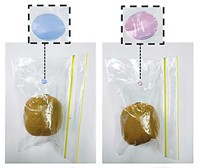Advertisement
Grab your lab coat. Let's get started
Welcome!
Welcome!
Create an account below to get 6 C&EN articles per month, receive newsletters and more - all free.
It seems this is your first time logging in online. Please enter the following information to continue.
As an ACS member you automatically get access to this site. All we need is few more details to create your reading experience.
Not you? Sign in with a different account.
Not you? Sign in with a different account.
ERROR 1
ERROR 1
ERROR 2
ERROR 2
ERROR 2
ERROR 2
ERROR 2
Password and Confirm password must match.
If you have an ACS member number, please enter it here so we can link this account to your membership. (optional)
ERROR 2
ACS values your privacy. By submitting your information, you are gaining access to C&EN and subscribing to our weekly newsletter. We use the information you provide to make your reading experience better, and we will never sell your data to third party members.
Natural Products
Stale beer? There’s an app for that
Brewers could use a smartphone to read a simple colorimetric test for beer freshness
by Mark Peplow
March 28, 2016

Chemists have developed a quick and easy way to measure a beer’s freshness, using only a smartphone and a color-changing polymer film (Anal. Chem. 2016, DOI: 10.1021/acs.analchem.6b00167). The film detects furfural, which forms in the Maillard reaction between reducing sugars and amines. Furfural concentrations rise as beer ages, especially if it has been exposed to heat, and give the amber nectar a musty taste.
Brewers measure furfural and other freshness indicators using techniques such as high performance liquid chromatography (HPLC), but this involves expensive equipment and time-consuming sample preparation. Although there are other colorimetric methods, they are only able to detect a narrow range of concentrations and are not used in the brewing industry.
The polymer film, developed by María Cruz Moreno-Bondi and colleagues at the Complutense University of Madrid, incorporates 4-vinylaniline, which reacts with furfural to produce a red cyanine derivative. The researchers blended the 4-vinylaniline monomer with ethylene glycol dimethacrylate, a cross-linker that strengthens the polymer film, and 2-hydroxyethylmethacrylate, which increases its hydrophilicity. Heating the ingredients in a mold at 70 °C for 24 hours produced a flexible film, which the researchers cut into 6-mm-wide discs.
They dipped the discs in diluted samples of old lager beer provided by Spanish brewer Mahou-San Miguel, and saw that the films changed from pale yellow to pink over the course of an hour. With the help of HPLC measurements, they directly related the final color of the film to the samples’ furfural concentrations. “We were very surprised at the reproducibility,” says Moreno-Bondi.
Then they created an Android app, loaded with this calibration curve, which could interpret a smartphone snapshot of an indicator disc to identify furfural concentrations from 39 to 500 μg/L. Drinkers can typically taste furfural at concentrations of about 400 μg/L, notes Moreno-Bondi.
The app is not really designed for consumers, she says. Instead, Mahou-San Miguel is interested in developing the test for its own use, potentially to offer a quick check on their beer immediately before shipping. “With a global market, these measurements will be more and more important,” she says.




Join the conversation
Contact the reporter
Submit a Letter to the Editor for publication
Engage with us on Twitter